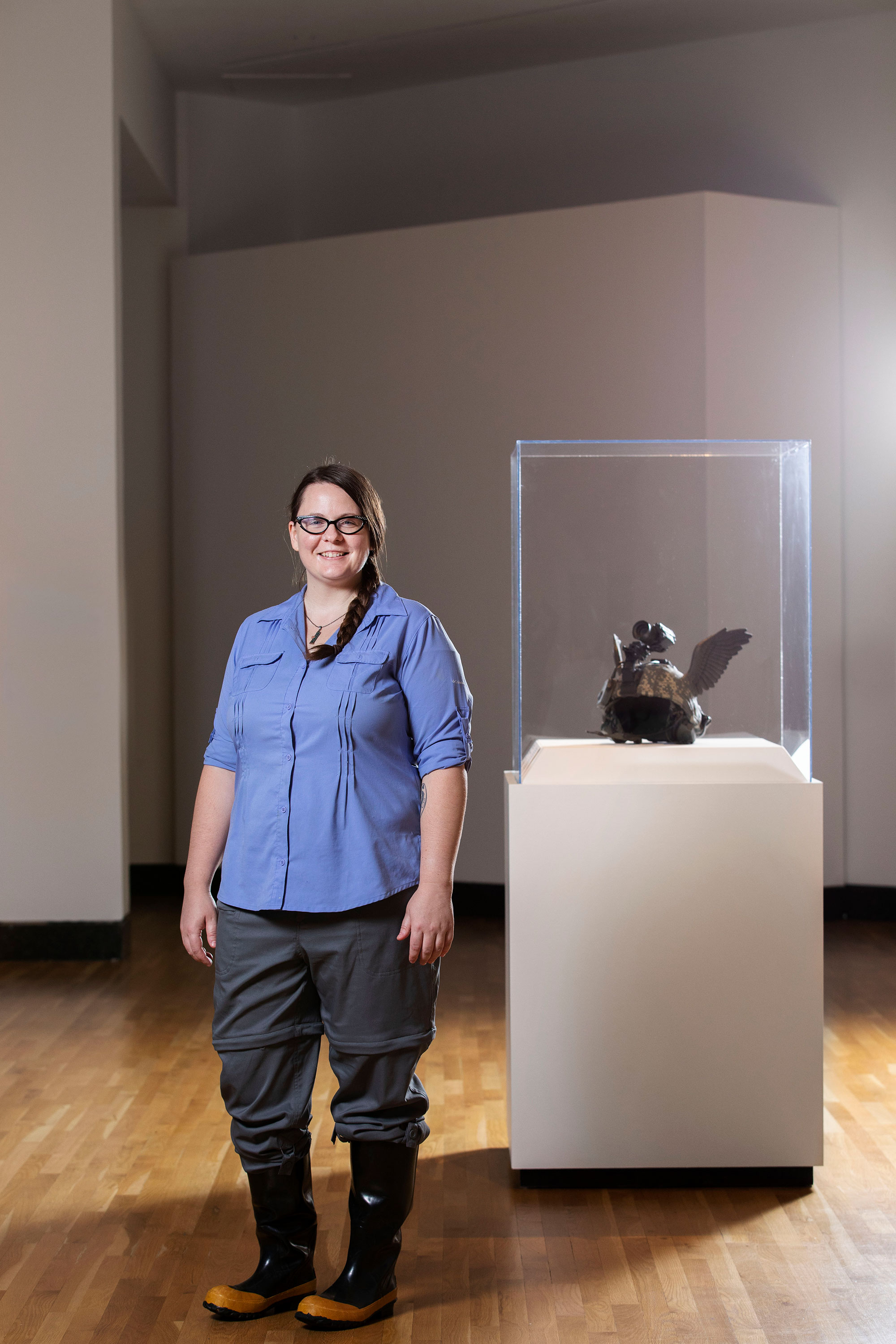 Portrait by Brianne Lehan and Lyon Duong/UF Photography. Artwork: "The bird of Hermes is my name, eating my wings to make me tame" by Jennifer Allora and Guillermo Calzadilla, 2010, courtesy of the artists and Lisson Gallery
Portrait by Brianne Lehan and Lyon Duong/UF Photography. Artwork: "The bird of Hermes is my name, eating my wings to make me tame" by Jennifer Allora and Guillermo Calzadilla, 2010, courtesy of the artists and Lisson Gallery
Interdisciplinary doctoral candidate, School of Natural Resources and Environment & Florida Museum of Natural History
When she’s not studying salamanders, this ecologist uses social media to make science more inclusive and accessible and draws on psychology to help science resonate beyond the lab.
Hanging with #HERpers
On the way to a conference on reptiles and amphibians in a van full of female herpetologists, Hecht shared a picture of the group and tagged it #HERpers. What started as a pun became a movement as female herpetologists, both amateur and professional, began using the hashtag to share photos of their adventures. “To be able to brush off the idea that women don’t like these things is huge for me. I’ve seen a couple of tweets from moms with little girls that are into in reptiles and amphibians. People will tell them, ‘You can’t do that, that’s for boys.’ Now they have a whole community of representation.” With the group Partners in Amphibian and Reptile Conservation, she’s branching out to #herpetALLogy to include other underrepresented groups. “It’s leading to some really cool conversations. People are finding each other through it who didn’t know they had other people around like them.”
Why salamanders?
“I could talk about this for the whole day. Salamanders have so many cool adaptations and they’ve been around for so long. They can breathe through their skin. Some can go a really long time without eating. Some of them can regrow their limbs and organs. If you think about all these adaptations that superheroes have, a lot of them could have been inspired by salamanders. There are some that freeze in the permafrost and come out alive. I could go on and on, so I won’t.”
What keeps you motivated?
“What happens to salamanders is not isolated to salamanders. They’re in our water, they’re using our forests. When they are disappearing, that means these habitats and ecosystems are not doing well in general. What’s happening to them is happening to us.”
Scientists as humans
Hecht’s outreach work strives to show scientists as regular people. In a recent storytelling event at the Florida Museum of Natural History, she traced her career through the scars she’s acquired through science mishaps. “Showing the everyday life of scientists is so powerful,” she says. “We make mistakes sometimes. We’re not geniuses who know everything. That’s a huge barrier sometimes keeping out people who might have wonderful ideas, but feel that they are not the right fit for science. I don’t think there is a right fit for science necessarily.”
This is part of a series highlighting people at the University of Florida working to protect our well-being and the health of the planet, paired with works from the Harn Museum of Art exhibition “The World to Come: Art in the Age of the Anthropocene.” See more at ufl.to/theworldtocome.